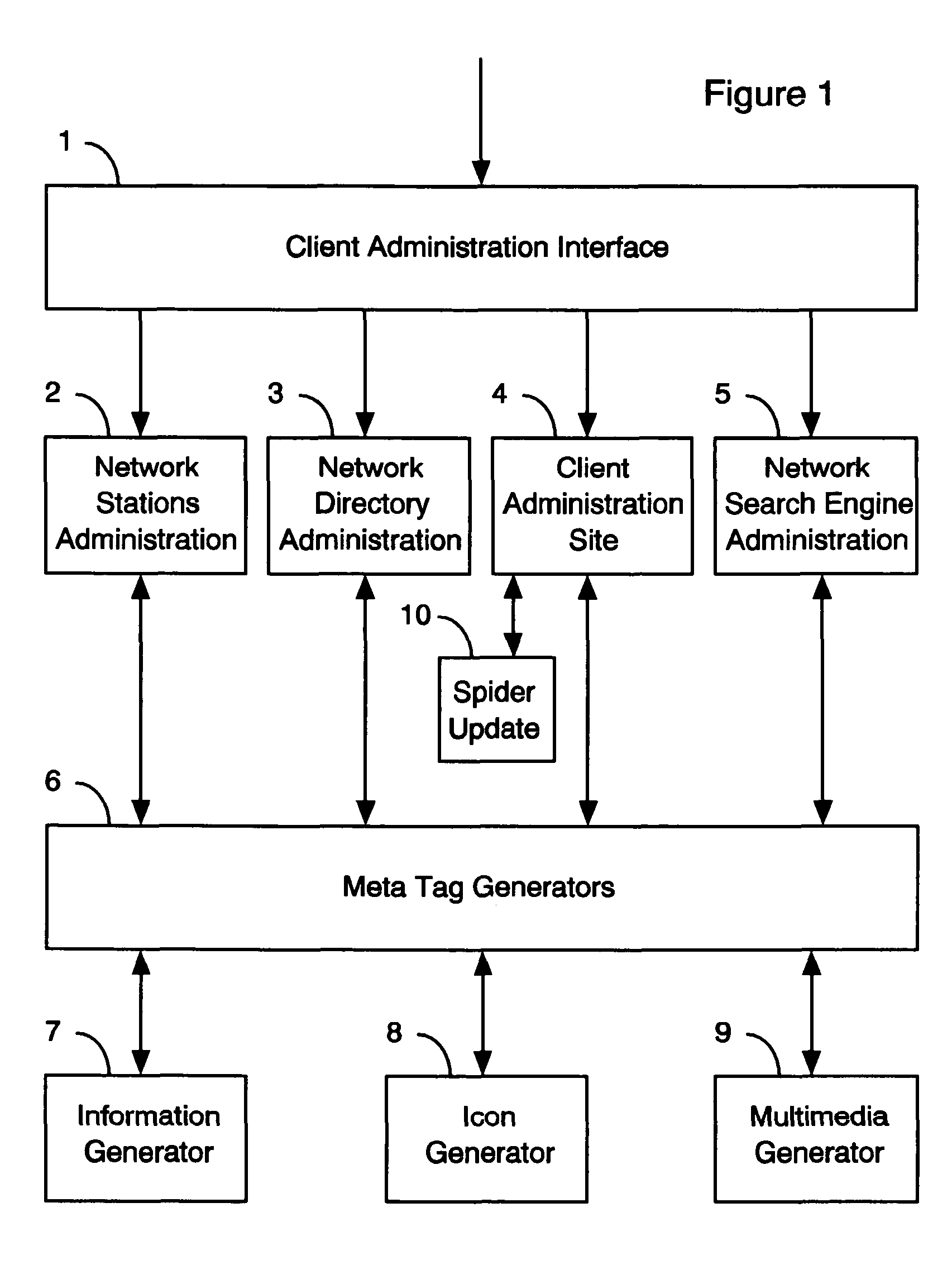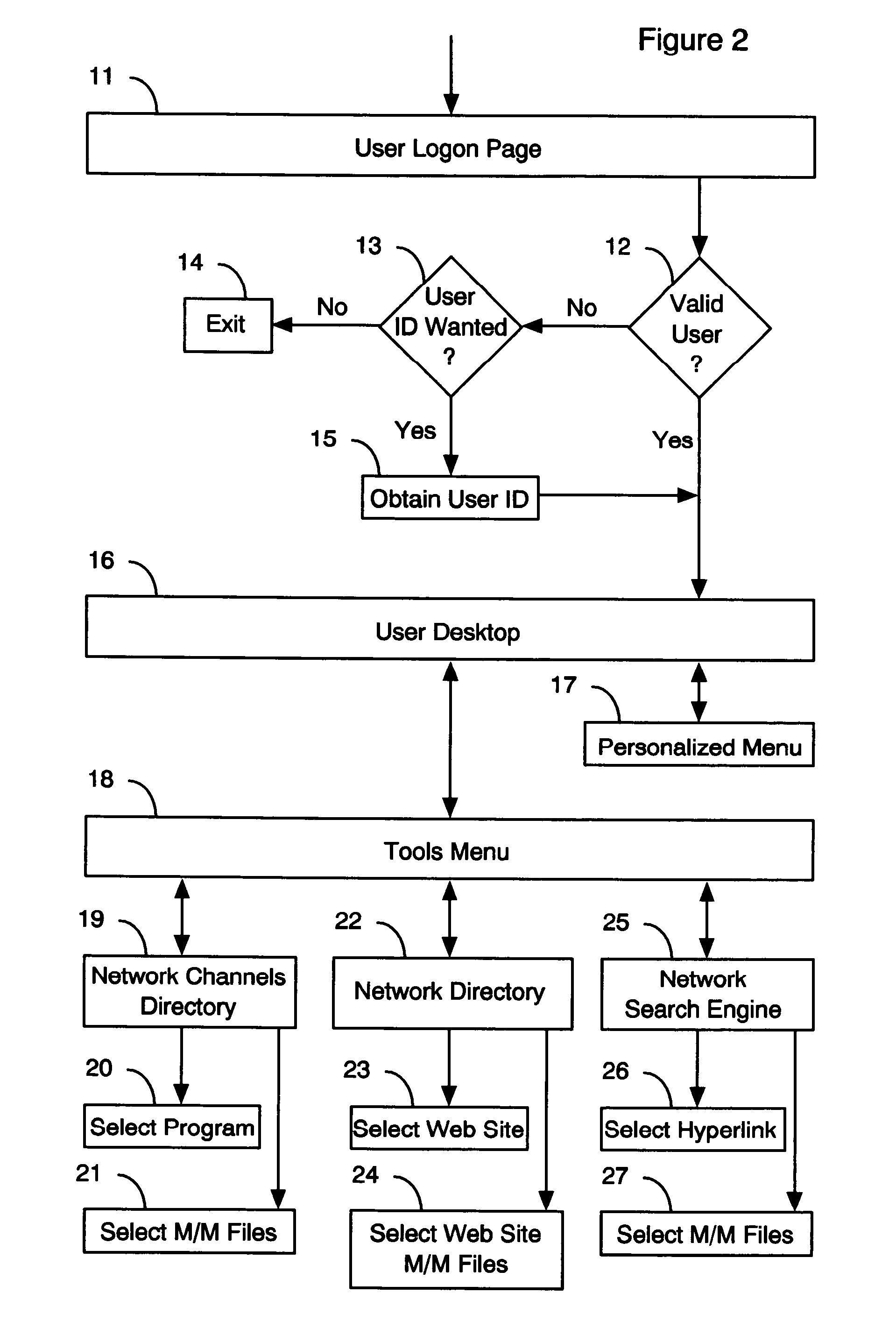Broadcast network platform system
a broadcast network and platform technology, applied in the field of network search engines, can solve the problems of difficult to locate items, substantial loss of traffic, and search engines inevitably turning to alternative ways, and achieve the effect of more accurate results and accurate results
- Summary
- Abstract
- Description
- Claims
- Application Information
AI Technical Summary
Benefits of technology
Problems solved by technology
Method used
Image
Examples
example 1
Yahoo Corporation with Multiple Document Entries Under Station 1
[0085]
Yahoo.comHomeStation 1Yahoo.com / shoppingOnline MallChannel 1.1Yahoo.com / BillPayPill Paying Svc.Channel 1.2Yahoo.com / BillPay / PhonePhone BillsProgram 1.2.1Yahoo.com / BillPay / ElectricElectric BillsProgram 1.2.2Yahoo.com / BroadcastOnline VideosChannel 1.3
[0086]The numerical indexing system illustrated above systematically organizes, and classifies data in a systematic manner so that it can receive multimedia and video content over the Internet in a format similar to that of a television. At the same time instead of advertising long document names they can advertise the station, channel, or program number.
[0087]Those skilled in the art will recognize that the stations, channels, and programs can be displayed on the search results screen 28 in any convenient manner, so long as the data is presented in an organized hierarchical manner such that a user is able to select a Web location and link directly to it, or in the alte...
PUM
 Login to View More
Login to View More Abstract
Description
Claims
Application Information
 Login to View More
Login to View More - R&D
- Intellectual Property
- Life Sciences
- Materials
- Tech Scout
- Unparalleled Data Quality
- Higher Quality Content
- 60% Fewer Hallucinations
Browse by: Latest US Patents, China's latest patents, Technical Efficacy Thesaurus, Application Domain, Technology Topic, Popular Technical Reports.
© 2025 PatSnap. All rights reserved.Legal|Privacy policy|Modern Slavery Act Transparency Statement|Sitemap|About US| Contact US: help@patsnap.com



